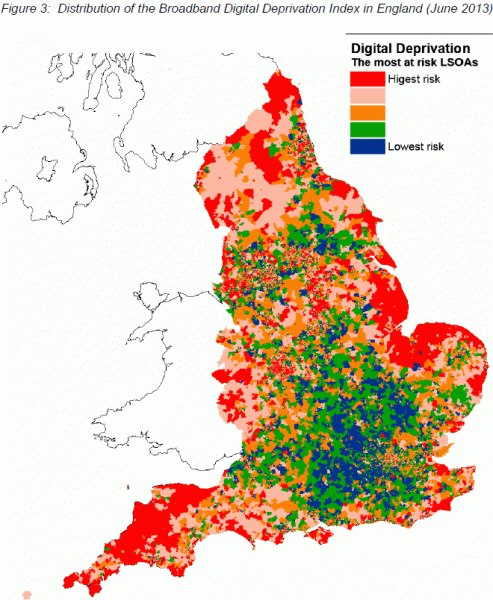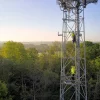Point Topic Maps the Risk of Non-Adoption for Superfast Broadband in England

The physical availability of a superfast broadband (25-30Mbps+) ISP network is not the only barrier to adoption and a new map of England, which was put together by telecoms analysts at Point Topic, attempts to identify where there is the highest risk of related “digital deprivation“.
According to the firm’s research, it doesn’t matter if you’re looking at a rural or urban area because the risk of Broadband Digital Deprivation (BDD) can be found everywhere and tackling it remains very difficult. But Point Topic doesn’t so much focus on the question of “Why” as to instead try and identify the issue of “Who” and “Where“.
Advertisement
The Broadband Digital Deprivation Index (BDDI) combines data from its existing database of Internet service coverage and speeds with information from other sources like the English Index of Multiple Deprivation and the England Census 2011. It then considers 7 factors including age, income, disability, housing, broadband availability, children and education in order to try and identify the area’s most at risk of lower take-up.

Initially it still looks like rural areas suffer the most and in many ways they do, not least because the BDUK project has yet to help expand BT’s FTTC/P coverage into those areas but that should change over the next few years as coverage is pushed out to 95% by 2017. On the other hand it also shows that the risk in London is in places on a par with the risk in rural Cumbria.
Point Topics Statement (BDDI Report Feb 2014)
“Today it’s almost as difficult to convert a household or business in Inner London into an internet user as it is in deepest Cumbria. This is a problem for national and local policy makers and regulators as well as affecting the market for broadband suppliers (ISPs). Not only do we, as a country, have a goal of getting households online but the business models of ISPs have to take account of their market and the potential for growth and regulators are tasked to ensure that policies are implemented appropriately.”
Currently Point Topic has only conducted the modelling for England but it still provides for a useful insight into an aspect of connectivity that could become more noticeable as superfast broadband coverage achieves its eventual goals. The Government’s Office for National Statistics also has some useful data on how low income and disability can affect uptake (here). Lest we not forget that there will always be those who simply don’t want to go online.
Digital Deprivation Index (England)
http://point-topic.com/../Digital-Deprivation-index-in-England-feb14.pdf
Mark is a professional technology writer, IT consultant and computer engineer from Dorset (England), he also founded ISPreview in 1999 and enjoys analysing the latest telecoms and broadband developments. Find me on X (Twitter), Mastodon, Facebook, BlueSky, Threads.net and Linkedin.
« Devon Council Refuse Vote on BT vs South Hams Broadband Projects





















































Comments are closed